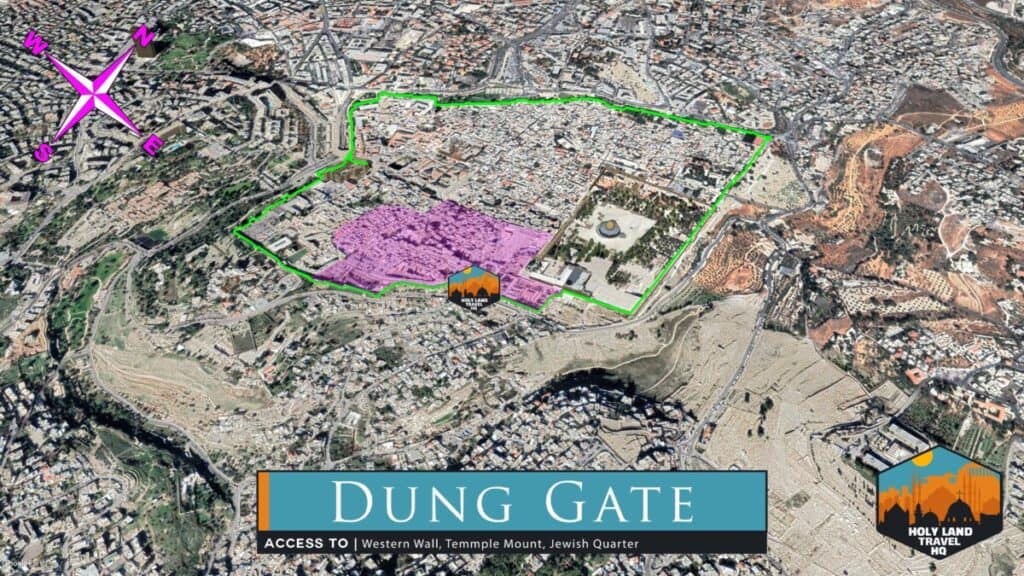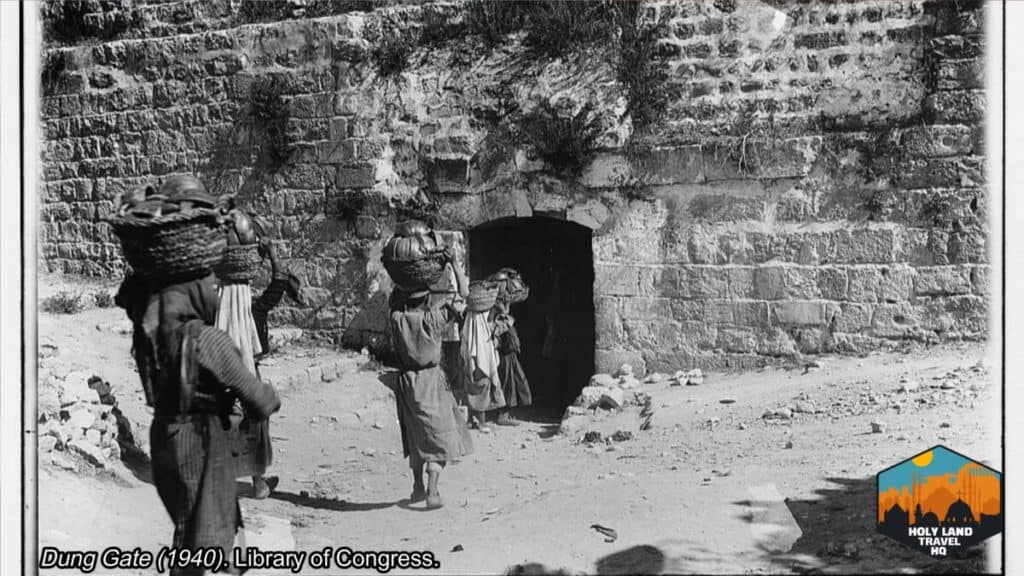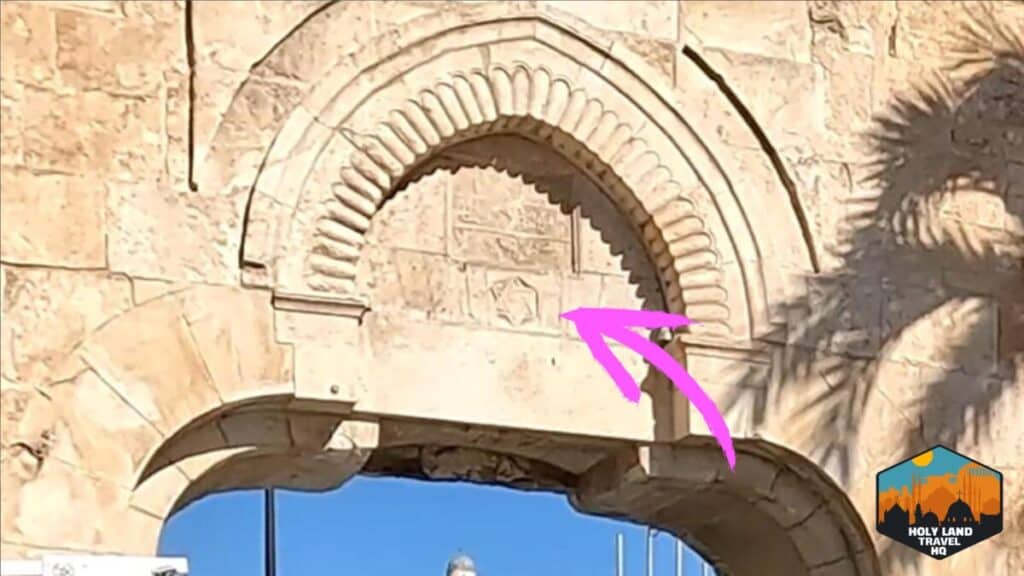- Gates Main
- Jaffa Gate
- Zion Gate
- Dung Gate
- East Gate (also known as Golden Gate)
- Lion’s Gate
- Herod’s Gate
- Damascus Gate
- New Gate
Location of Dung Gate.
The Dung Gate is located on the southern wall of the modern Old City. It provides direct access to the Western Wall plaza and the Mughrabi Gate that allows non-Muslims to enter the Temple Mount.

What is the Hebrew name for Dung Gate?
The modern gate was built by the Ottomans in the 17th century under Suleiman the Magnificent’s city wall and gate project. The Hebrew name for the gate is Sha’ar Ha’ashpoth (שַׁעַר הָאַשְׁפֹּת), which just means Dung Gate. The gate is named after the gate of the same name that is mentioned in Nehemiah.
Biblical history of Dung Gate.
In Chapter 2, Nehemiah describes leaving the city at night to inspect the outer walls and gates. He leaves through the Valley Gate, which was most likely at the top of the Tyropoean Valley, or maybe even as far up as the Transversal Valley. Either way, Nehemiah left the confines of the city to inspect the walls. He headed south towards the Dung Gate.
Many scholars believe that the ancient Dung gate was located at the southernmost tip of the City of David next to the Pool of Siloam. It is thought that sewage ran down the slope and exited through the gate. Garbage and refuse are also thought to have been disposed of through the gate. Hence the name ‘Dung.’
Modern history of Dung Gate.
In the Second Temple period city model located at the Israel Museum, a trough or drainage ditch can be seen starting from the area of the Ophel and ending at the southern tip of the ancient core of the city. This would mean that sewage and refuge most likely built up in the Kidron Valley.

Today it is known that the Kidron valley is not as deep as it once was due to debris building up over time. Unfortunately, no archaeological digs have been done beyond the Pool of Siloam due to the fact that the area in that portion of the Kidron Valley is part of the Silwan neighborhood and West Bank. However, the sewage and drainage ditch leading up to the Ophel has been found and is actually one of the pathways that leads back to the City of David Archaeological Park from the Pool of Siloam.
Originally the Ottoman Dung Gate was a pedestrian walkway that was too small for horses or carts. It had no defensive purpose to it. In the 19th century, a gatehouse was built similar to the others that the Ottomans had built, but smaller.

During the Jordanian occupation of the city between 1948 and 1967, the gatehouse was removed, and the pedestrian opening was widened to allow vehicles to pass through. As a result of this project an arched lintel was revealed. Etched in the center of the lintel was a six-pointed star, or what we often refer to today as a Star of David.

It may seem odd that the Ottomans, who were Muslims, would use a Jewish symbol in their decorations. However, the six-pointed star was originally known as the Seal of Solomon and was also used in Muslim mystic culture. It was used by Jews but didn’t come into widespread use as a Jewish symbol until the Zionist movement in the late 1890s which sought to re-establish a Jewish homeland in the region of Palestine.
After the Six-Day war in 1967, the Israelis renovated the gate to what we see today.
What do Muslim’s call Dung Gate?
Muslims call the gate Bab al-Maghariba (باب المغاربة) which references the neighborhood that occupied the area inside the gate and in front of the Western Wall until 1967. The people who lived there were immigrants from North Africa known as Mughrabim.
About 20 yards to the west of the Dung Gate is the Tanner’s Gate. This gate is not considered one of the Old City’s main gates. Today it’s more of a pedestrian entrance to the Western Wall Plaza. This gate was prominent in the Crusader period as there was a cattle and leather market nearby.
References:
https://www.biblewalks.com/DungGate
https://historicalsitesinisrael.com/en/dung-gate-jerusalem
Matev, Ami. “One Square Kilometer: The Old City – A Guide to the Sites. 2015. Old City Press.

